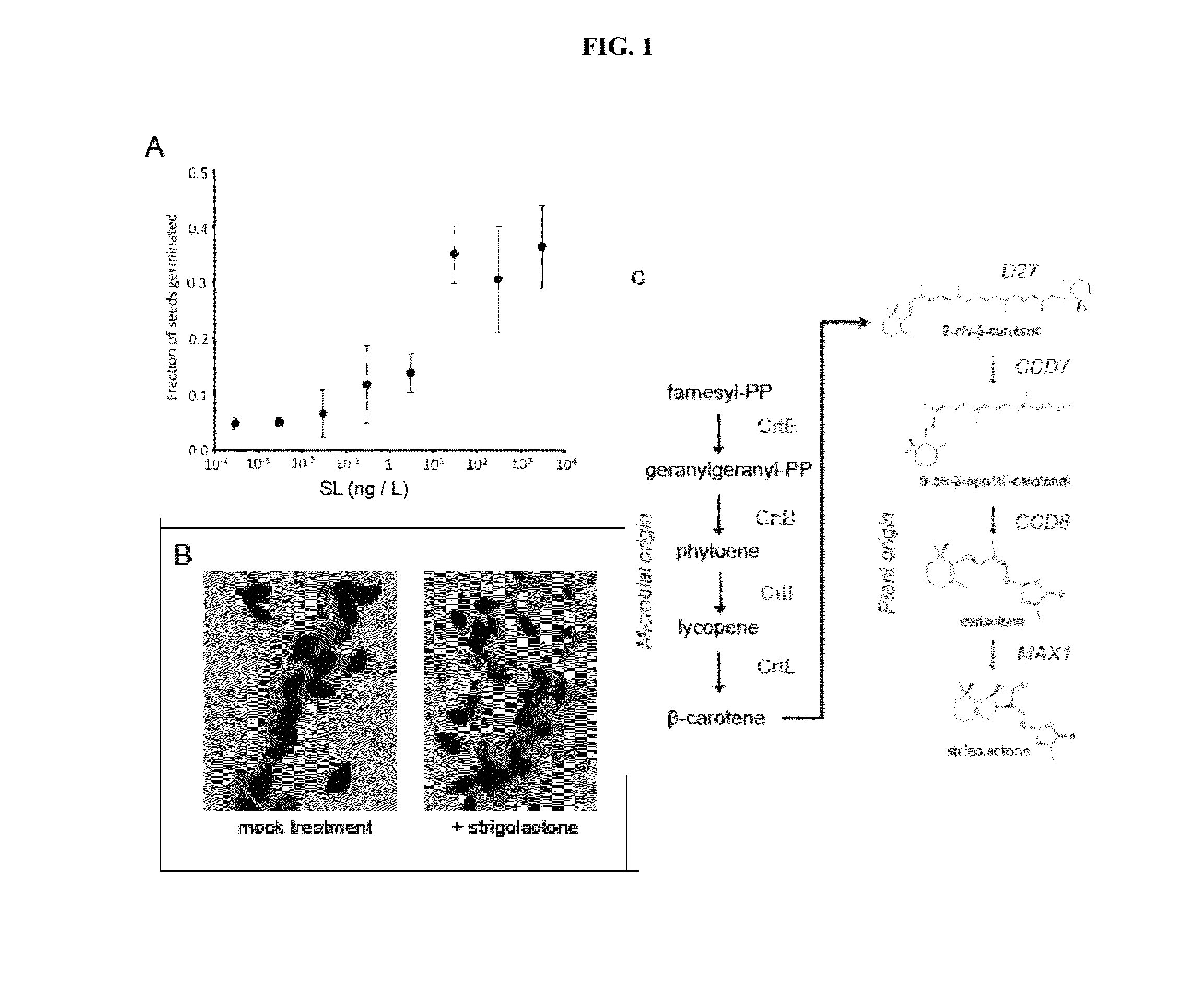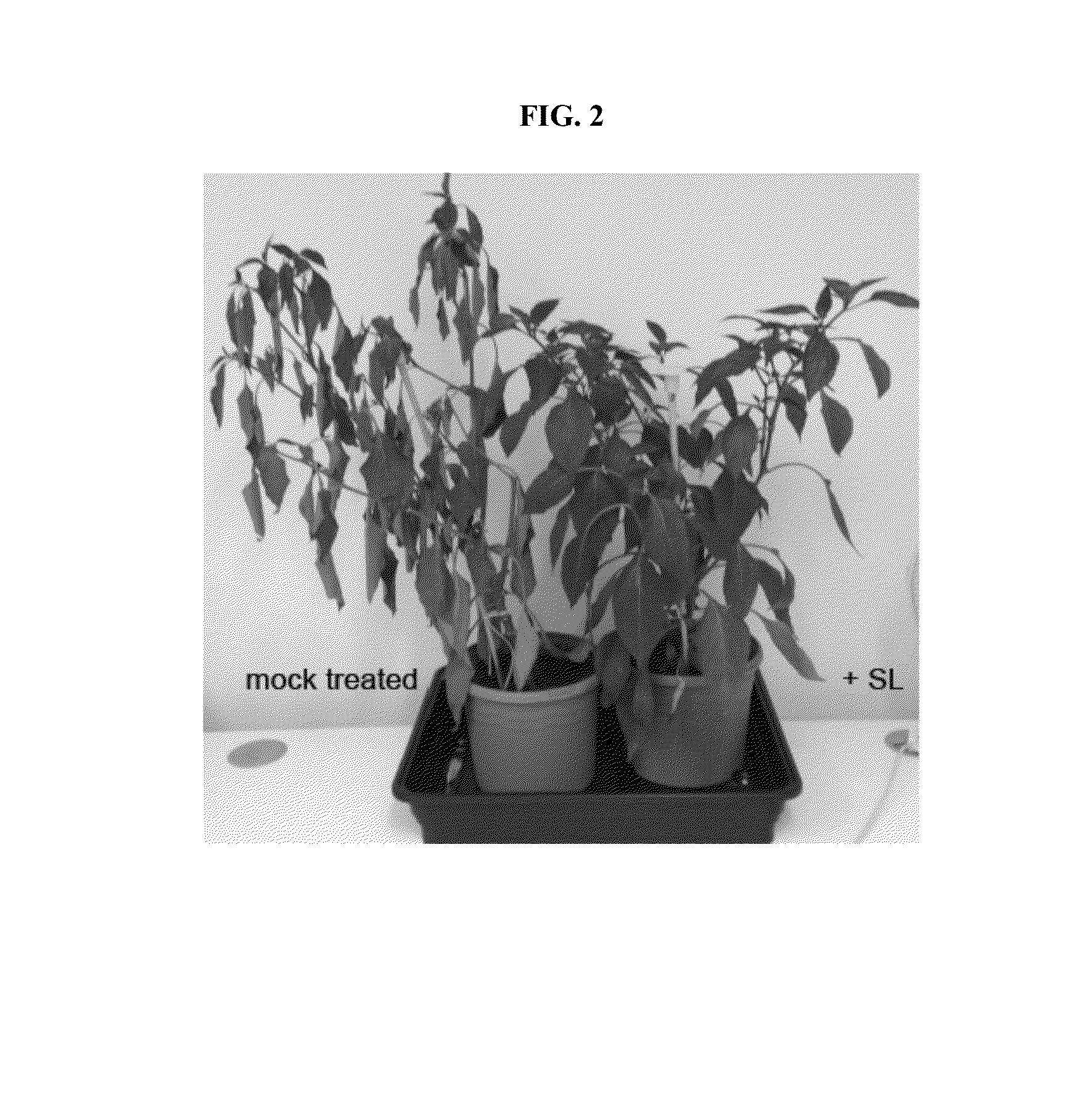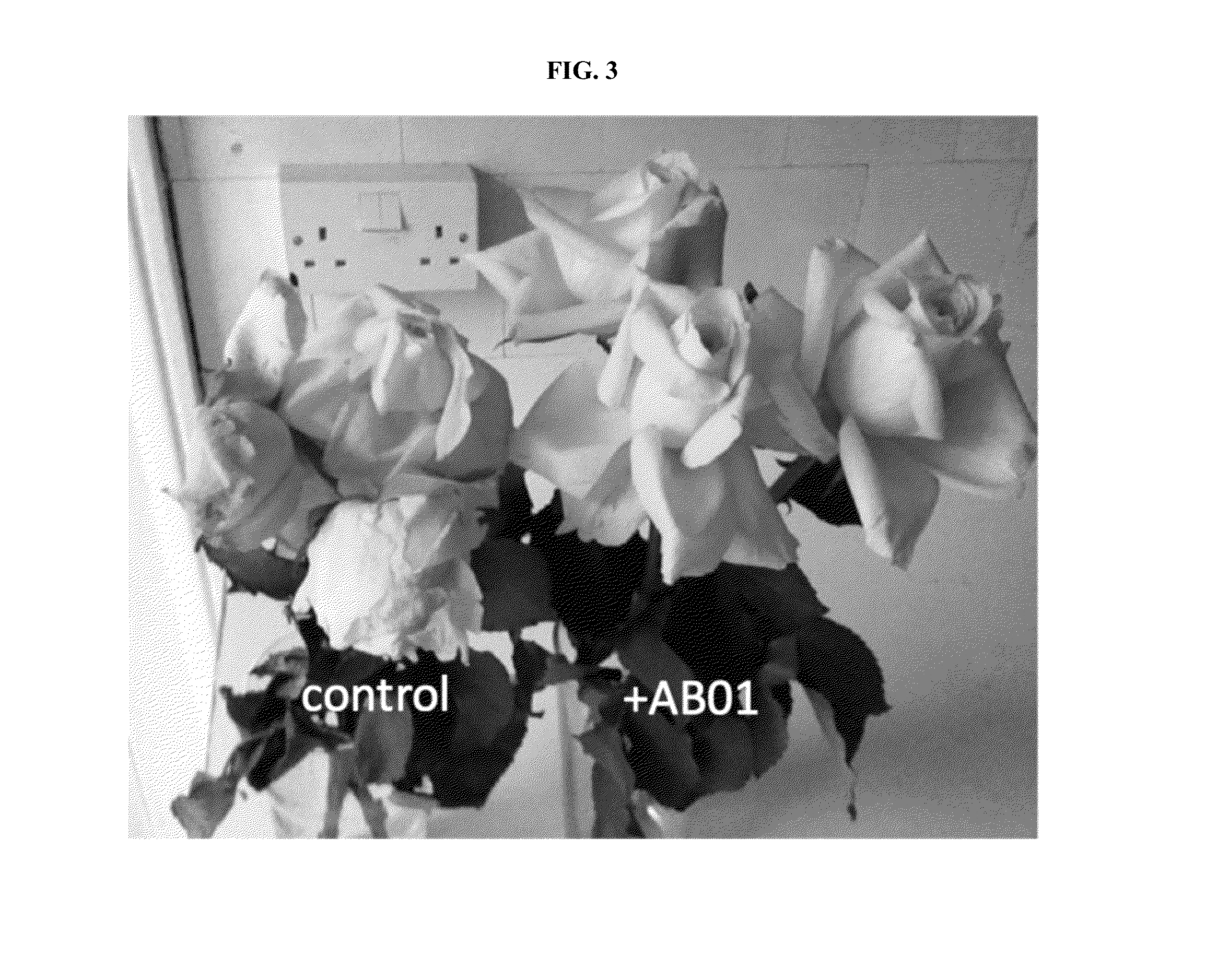Strigolactone Compositions And Uses Thereof
a composition and strigolactone technology, applied in the field of strigolactone compositions, can solve the problems of reducing yield, exacerbate crop losses, and currently no crop protection product that enhances the robustness of field crops to prolonged drought and water-limitation stress, and achieves the effects of reducing or delayed wilting increasing the yield and prolonging the life of the contacted plan
- Summary
- Abstract
- Description
- Claims
- Application Information
AI Technical Summary
Benefits of technology
Problems solved by technology
Method used
Image
Examples
example 1
Synthesis of Plant Propagation Material
Chemical Synthesis of a Chemical Mimic of Strigolactone
[0441]The use of natural plant growth regulators as crop protection products is well established. For example, gibberellins are widely used in agriculture for fruit setting, ethylene and ethylene analogs are used as defoliants, and recently Valent Biosciences Corporation has commercialized abscisic acid for enhancing color in table grapes [19]. However, the high cost of chemical synthesis and / or extraction from plant materials has precluded the testing and adoption of strigolactone (SL) as a useful tool for agriculture. To address these problems, we developed a synthetic route to a SL mimic compound starting from a readily available sesquiterpene lactone, sclareolide. Sclareolide is economically extracted from the clary sage plant and is currently used in industrial production of perfumes. Global production of the sclareolide is estimated at 50-100 metric tons [20]. Our synthesis of the scl...
example 2
Lab-Scale Validation of SL as a Drought Tolerance-Enhancing Product
[0445]This example evaluates the ability of SL to mitigate the negative effects of water stress in maize. Several standard metrics are used to determine efficacy of SL treatment, including onset of water stress symptoms (leaf rolling, reduction in chlorophyll) and grain yield. Using these metrics to evaluate efficacy in enhancing drought tolerance, we are evaluating (1) the best methods for application of SL, (2) the dose concentration of SL, and (3) the dose schedule of SL, thereby determining the stage of plant growth where application has the largest effect. Taken together, this data enables us to estimate the magnitude improvement in crop health and harvest yield to expect in future phases of the project. The overall efficacy of SL treatment on harvest yield (per plant and bushels per acre) is key in determining the value proposition of technology adoption for growers.
example 3
Development of a Prototype Product for Use in Field Trials
[0446]This example focuses on formulation, initial safety testing (both toxicology and environmental fate), and field efficacy of SL under different conditions. Data from Example 2 on the application method and dose with the highest efficacy guides product formulation efforts.
[0447]Formulation of the SL active ingredient with inert carriers is tested for effective delivery to maize fields. For either a foliar spray or an irrigation supplement, it is likely that a wettable powder is the preferred formulation. Wettable powders contain relatively low amounts of the active ingredient along with inert carriers such as surfactants to allow even spraying. Formulations are tested for active ingredient release profiles using analytical chemistry (GC-MS), while formulation efficacy is measured in greenhouse maize and small-scale field experiments. Initial safety testing are focused on generating mammalian toxicology data and environmen...
PUM
| Property | Measurement | Unit |
|---|---|---|
| volumes | aaaaa | aaaaa |
| concentrations | aaaaa | aaaaa |
| concentration | aaaaa | aaaaa |
Abstract
Description
Claims
Application Information
 Login to View More
Login to View More - R&D
- Intellectual Property
- Life Sciences
- Materials
- Tech Scout
- Unparalleled Data Quality
- Higher Quality Content
- 60% Fewer Hallucinations
Browse by: Latest US Patents, China's latest patents, Technical Efficacy Thesaurus, Application Domain, Technology Topic, Popular Technical Reports.
© 2025 PatSnap. All rights reserved.Legal|Privacy policy|Modern Slavery Act Transparency Statement|Sitemap|About US| Contact US: help@patsnap.com



